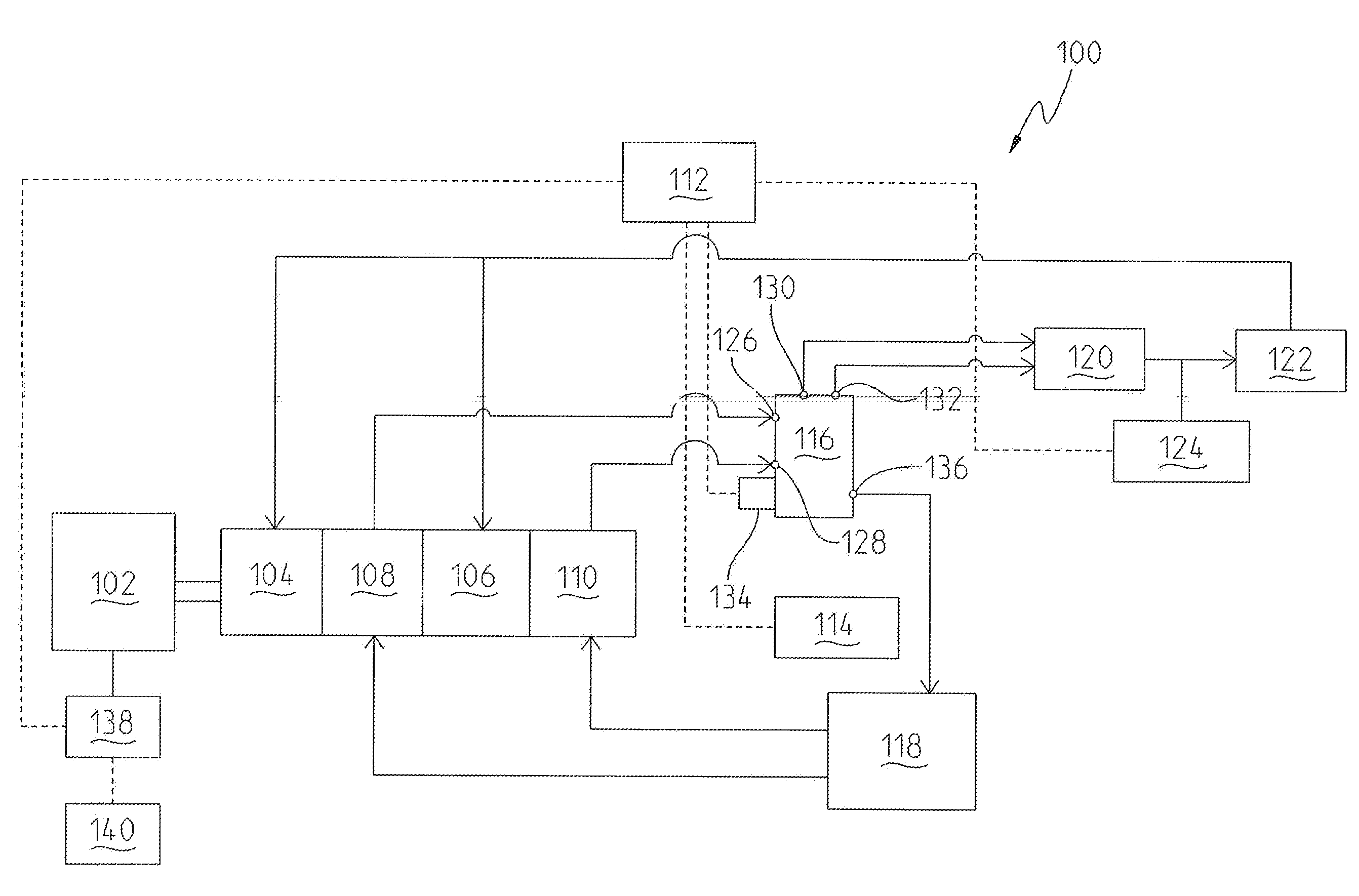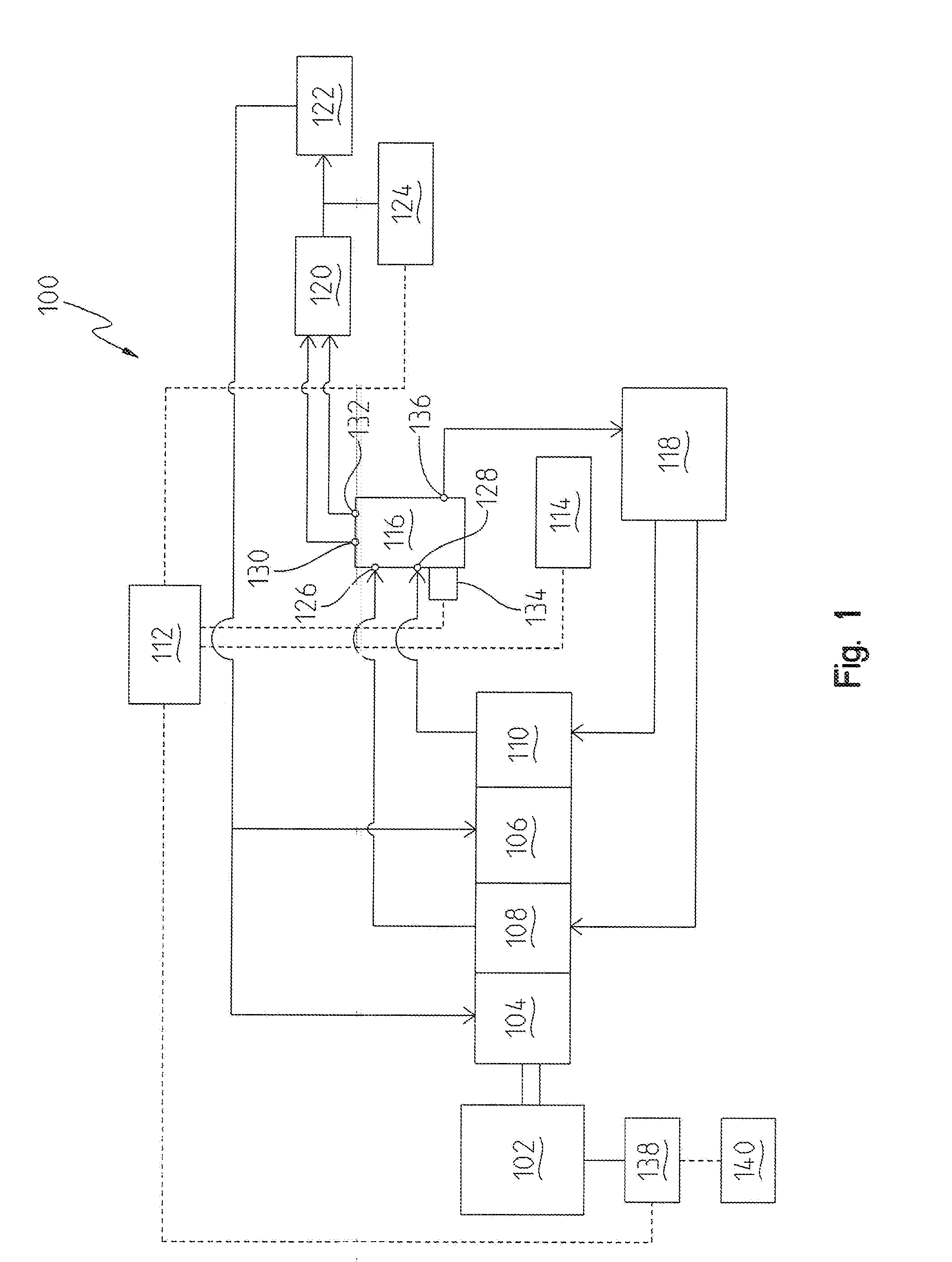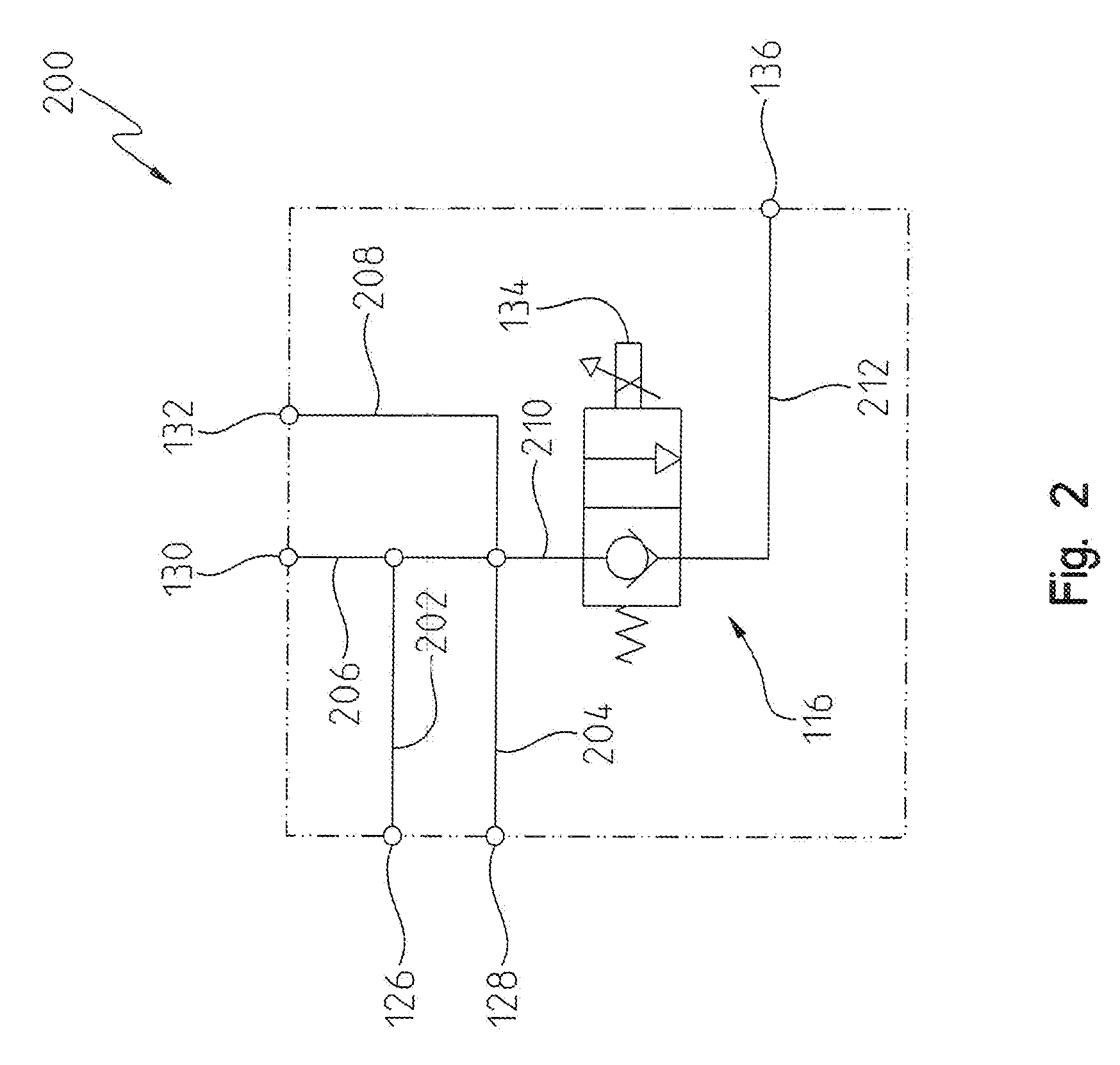Charge bypass system for engine start
a technology of bypass system and engine, which is applied in the direction of engine starter, machine/engine, servomotor, etc., can solve the problems of difficult cranking of the engine, difficulty in starting the conventional engine, and difficulty in cranking the engine, so as to reduce the parasitic load of the engine, reduce the pressure of the charge system, and reduce the effect of parasitic load
- Summary
- Abstract
- Description
- Claims
- Application Information
AI Technical Summary
Benefits of technology
Problems solved by technology
Method used
Image
Examples
Embodiment Construction
[0021]The embodiments of the present invention described below are not intended to be exhaustive or to limit the invention to the precise forms disclosed in the following detailed description. Rather, the embodiments are chosen and described so that others skilled in the art may appreciate and understand the principles and practices of the present invention.
[0022]In the present disclosure, a means for diverting fluid flow is incorporated into a system to reduce a parasitic load during an engine start in cold temperatures. For purposes of this disclosure, a cold temperature refers to the temperature of oil in an engine or transmission system of a vehicle. The oil temperature is first measured, and based on the measurement, the system can either perform under normal conditions or activate a bypass system to reduce the parasitic load. An example of this is illustrated in FIG. 1.
[0023]An exemplary embodiment of an engine start system 100 of a vehicle is shown in FIG. 1. The engine start...
PUM
 Login to View More
Login to View More Abstract
Description
Claims
Application Information
 Login to View More
Login to View More - R&D
- Intellectual Property
- Life Sciences
- Materials
- Tech Scout
- Unparalleled Data Quality
- Higher Quality Content
- 60% Fewer Hallucinations
Browse by: Latest US Patents, China's latest patents, Technical Efficacy Thesaurus, Application Domain, Technology Topic, Popular Technical Reports.
© 2025 PatSnap. All rights reserved.Legal|Privacy policy|Modern Slavery Act Transparency Statement|Sitemap|About US| Contact US: help@patsnap.com



